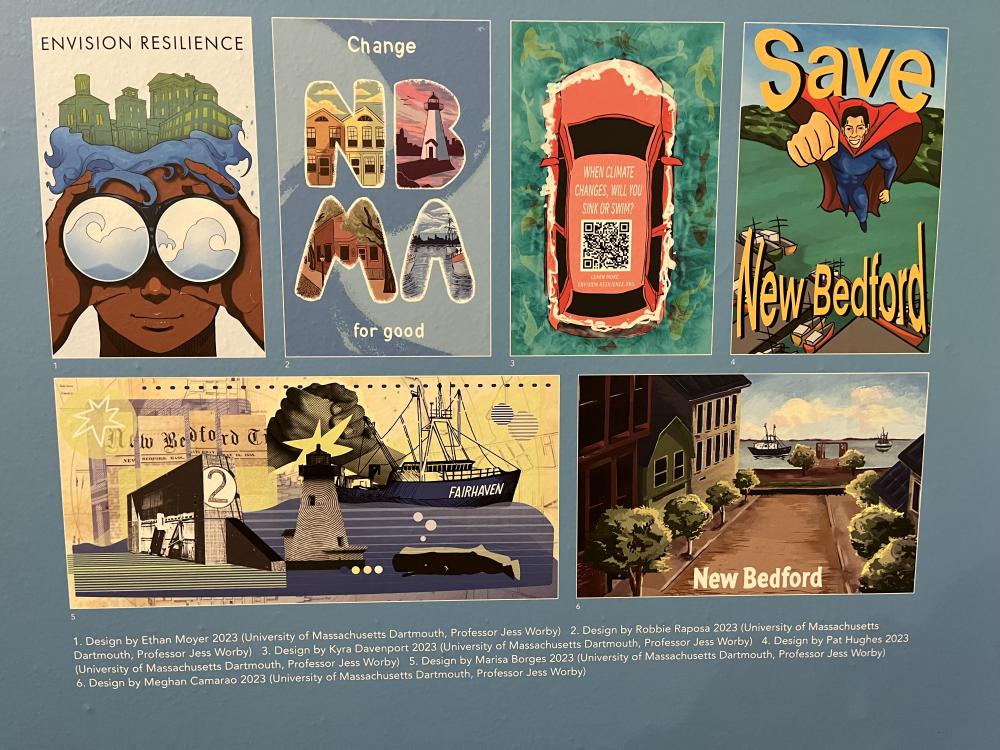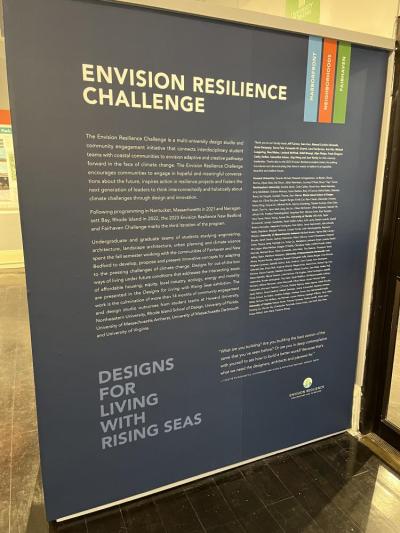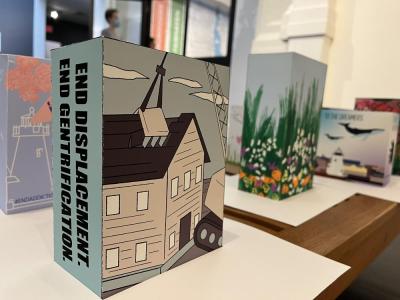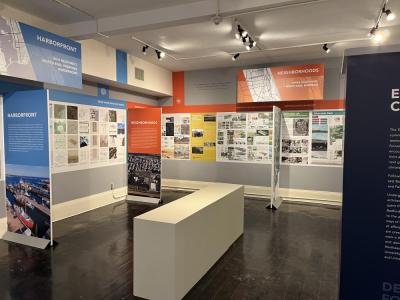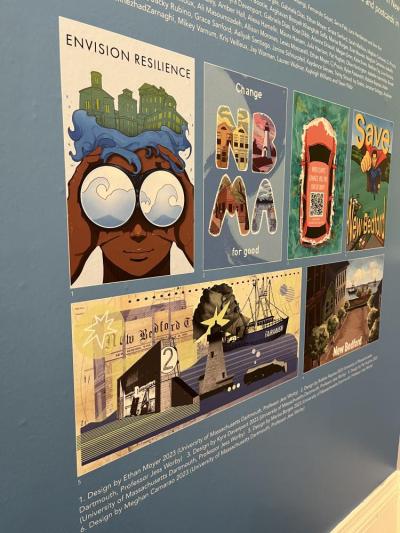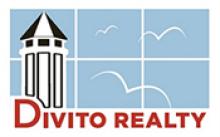UMass art students use music and illustration to address climate change
NEW BEDFORD — As engineers and climate scientists explore solutions to rising sea levels, UMass Dartmouth art students turned to music and illustration to explore this typically science-heavy subject.
UMass’s Dartmouth’s College of Visual and Performing Arts is the first art and design college to partner with the “Envision Resilience Challenge,” a project that asks students from various universities to imagine what a brighter future could look like for coastal communities facing climate change, according to the challenge’s website.
This year’s Envision Resilience Challenge, which began in Nantucket in 2021, focuses on how Fairhaven and New Bedford might adapt to rising sea levels. That futuristic vision will be on display in the “Designs for Living with Rising Seas” exhibition at the New Bedford Art Museum from Jan. 26 to March 23.
The opening reception for the Envision Resilience art exhibit will be held from 4 to 6 p.m. at the New Bedford Art Museum on Friday, Jan. 26.
CVPA students who participated in the Envision Resilience Challenge spent their fall semester developing artistic, outside-of-the-box ways to get people thinking about climate change.
The finished product ranged from activist posters to music compositions designed to evoke feelings and conversation about climate change. CVPA Professor Jing Wang’s students composed the music that will be playing at the exhibit.
Illustrator and CVPA senior Izzy Indermitte designed a poster that draws inspiration from New Bedford’s whaling history. Indermitte said the poster is meant to encourage New Bedford residents to think about climate change and to make meaningful changes in their community.
“Climate change is going to affect everybody,” Indermitte said. “It’s kind of up to everybody to find a way to adapt to these changes.”
Of the colleges and universities that participated in this year’s challenge, the CVPA is the only art school to get involved. CVPA Associate Dean Ann Kim said that art can help to make more science-heavy subjects like climate change more “digestible,” serving as a “bridge between science and the public.”
“We believe that art and design can be a creative, problem solving avenue,” Kim said of art’s ability to spark conversation about climate change.
Kim oversaw the CVPA’s involvement in the Envision Resilience Challenge, which was embedded into the CVPA’s 2023 fall semester courses. Serving as a liaison between the CVPA and the Envision Resilience organizers, Kim sought funding for field trips and helped arrange Zoom lectures with artists specializing in art related to climate change.
Many of the students from other participating colleges and universities come from an engineering or urban planning background.
The exhibit’s walls are covered with detailed architectural renderings and futuristic designs of how New Bedford and Fairhaven might re-engineer themselves to adapt to a reduced shoreline.
Claire Martin, the project manager for Envision Resilience, said the CVPA’s artistic contributions, such as posters and music, make it easier for people to engage with the exhibit.
“Art can be an entryway into the conversation for a lot of people,” Martin said. “Some of these more technical drawings could be daunting to someone. The art component helps bridge that and brings people into the conversation.”
One of the CVPA’s contributions to the exhibit is a collection of activist posters focusing on New Bedford and Fairhaven’s cultural “resilience” in the wake of climate change. One of the posters, designed by CVPA art student Kyra Davenport, is an illustration of a car partially submerged in water.
The poster reads, “When climate changes, will you sink or swim?”
Jess Worby, an assistant teaching professor at CVPA, guided his students through the process of designing these posters. Worby said artwork is about getting people to think about bigger subjects, like climate change, without being overly specific. Artwork’s goal is more about sparking discussions than providing detailed solutions, he explained.
“Imagery can speak in a very poetic way without being on the nose, it doesn’t have to be as specific as written language,” Worby said. “The purpose of any imagery is to make someone think or feel something that they weren’t thinking or feeling before they looked at it.”
The Envision Resilience exhibit also includes some proposed designs for decorating New Bedford’s electrical boxes — the large metal cabinets typically found on sidewalks. CVPA Assistant Teaching Professor Lara Henderson’s students created designs that emphasize nature and climate change, she said, but also tackle societal concerns, such as gentrification, accessibility and LGBTQ rights.
The students created these designs for the electrical boxes after weeks of community outreach and immersion in New Bedford’s art and culture. In past years, a city panel has approved some of these designs that can be found on electrical boxes around New Bedford. Henderson said that decorating these normally boring electrical boxes showcases New Bedford’s artist community.
“They just love to see color in their city,” she said. “They love to see vibrancy.”



